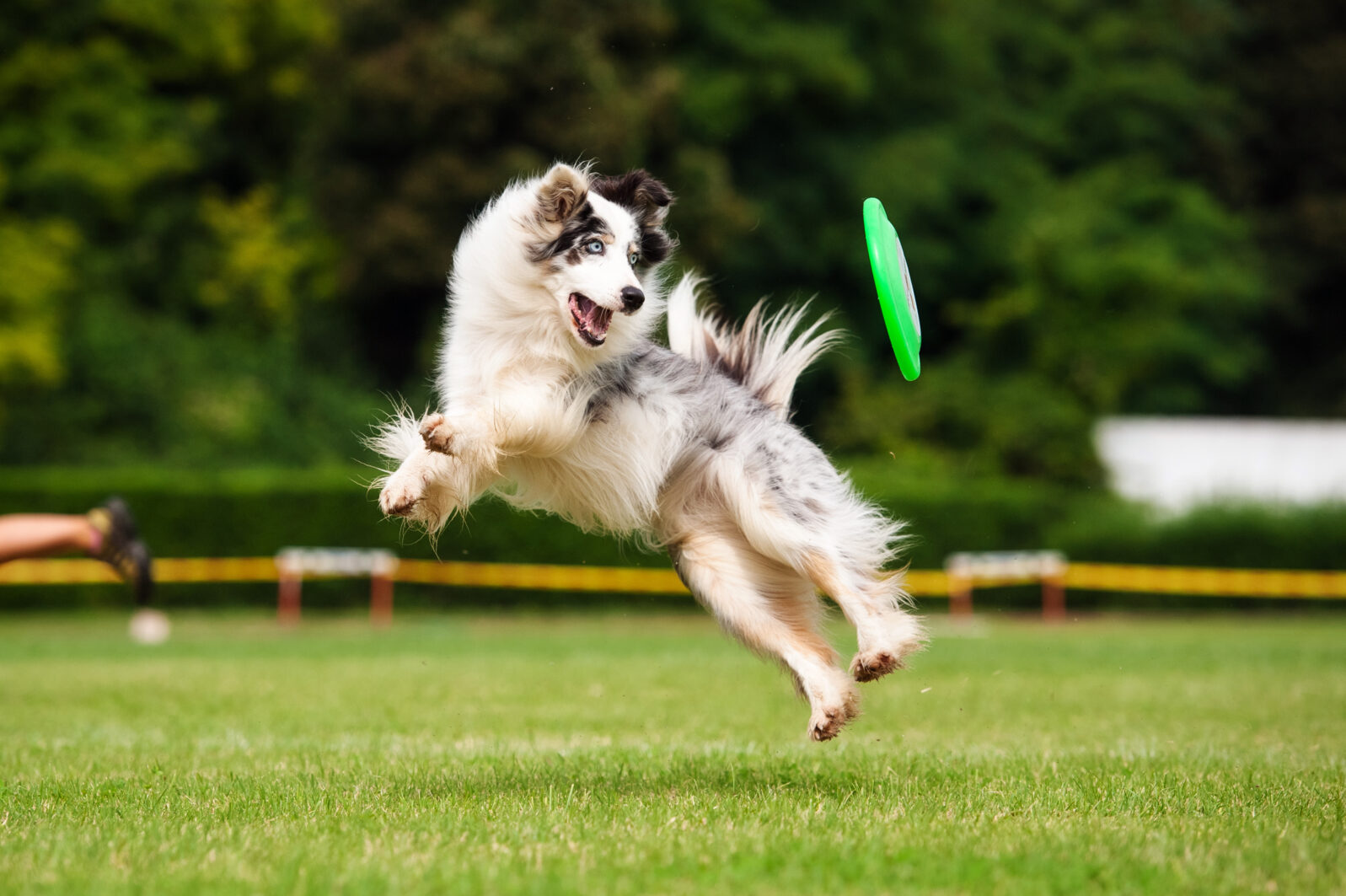Can a Dog Be Bred To Be As Smart As a Human?
An enterprising electrical engineer thinks it can be doneWithin one hundred generations or roughly 600 years? That’s the project Payton Pearson, an electrical engineer who gives his affiliation as the Air Force Institute of Technology in Dayton, Ohio, has set himself:
Artificial selection is a well-known phenomenon of selecting for certain physiological characteristics of various species of plants and animals, and it is something that human beings have been doing for thousands of years. A perfect example of this is the union and development of dogs under human stewardship since the beginning of the agricultural era of society. In that time, approximately 6,000 years [1], dogs have been artificially selected in such a way as to produce thousands of different breeds. From the stout Dachshund, a dog breed produced for the purpose of hunting den-dwelling animals, to the highly intelligent Border Collies who were bred to help sheep herders herd their flocks; the many different canine breeds have served humanity in a multitude of capacities for many generations. In this paper, using the concept of artificial selection,[1] it is determined with mathematical and statistical evidence how humans could artificially select for canine intelligence to such a degree as to produce canines with human levels of intelligence within a relatively short amount of time—600 years.
Payton Pearson, “Artificially Selecting for Intelligence in Dogs to Produce Human-level IQ Within 100 Generations” at Figshare (September 24, 2022)

He points to the Border Collie, considered to be among the most intelligent of breeds:
If one were to roughly compare the extent to which Border Collies have had their intelligence improved, it equates to a dog with the intelligence of a three-year-old child, or about 40% more intelligent than an average dog—which is to say that an average Border Collie can be considered a genius of the dog world; this means they would equate to a human with an IQ of 140 or higher on average.”
Payton Pearson, “Artificially Selecting for Intelligence in Dogs to Produce Human-level IQ Within 100 Generations” at Figshare (September 24, 2022)
He rates the Border Collie as 35 in human IQ terms (the human average being 100) and sets out a program for selective breeding of smarter dogs, which readers may peruse at leisure.
He is up front about his goals:
The main barrier here, above all else, is the proper advertising and advocation for such cultural moves. Being that these ideas are seemingly taboo in so many cultural circumstances, the zeitgeist needs to be shifted as such, which is one of the primary purposes of this paper.
Payton Pearson, “Artificially Selecting for Intelligence in Dogs to Produce Human-level IQ Within 100 Generations” at Figshare (September 24, 2022)
and about the limitations of his methods:
Converting the IQ from one species to another is difficult, and very much an imperfect science.
Payton Pearson, “Artificially Selecting for Intelligence in Dogs to Produce Human-level IQ Within 100 Generations” at Figshare (September 24, 2022)
We’ll come back to that in a minute. Also,
If one looks at the Flynn Effect as measured in human populations [13], it has been empirically determined that average human IQ has been increasing by three points per decade for the last few hundred years, though it does appear to be slowing in current times, and with no well-understood reason. It could be for any number of possible exterior factors. Not only could there be coevolving factors slowing down the process, but it could also be the very exponential nature of IQ, and how its measured increase necessarily slows as the raw values increase. This would mean, perhaps, that IQ increases could be a measure of the efficiency of the cerebral cortex and how well-folded it is within its volume, rather than an increase in cranial volume itself, but in-depth discussion on anatomy is beyond the scope of this paper.
Payton Pearson, “Artificially Selecting for Intelligence in Dogs to Produce Human-level IQ Within 100 Generations” at Figshare (September 24, 2022)
Well, it’s too bad if anatomy is beyond the scope of the paper because it is a critical factor here. Would a dog brain support a human-like neurological capability? It would require major restructuring of the brain in an animal that is a canid, not a primate. If we can’t do it with chimpanzees, why should we think we can do it with dogs?
About the Flynn effect in humans: It’s real but it is most likely the result of gradually improving standards of living, medical care, and schooling. People who are healthy, well-fed, and accustomed to learning might be expected to perform better on intelligence tests than their less fortunate ancestors. But, as Pearson notes, the process slows down because, like everything else — including dog intelligence — it can only go so far before it reaches a ceiling.
Cultural advantages like a good science education might make people competent science teachers or researchers but it doesn’t turn them into Albert Einstein (1879–1955), Kurt Gödel (1906–1978), or Marilyn vos Savant. For the same reasons, Pearson may be able to breed a smarter dog but not a dog that thinks like a human.
In any event, human consciousness is famously the “Hard Problem of Consciousness.” We don’t even know what it is, exactly.
Thus, with dogs, we don’t know what we are aiming at and it is not clear in that case how multiplying generations will get us anywhere.
Dogs are already smart, as animals go
All that said, the American Kennel Club advises that dogs are smarter than we think without any major changes anyway: “They can also understand more than 150 words and intentionally deceive other dogs and people to get treats, according to psychologist and leading canine researcher Stanley Coren, PhD, of the University of British Columbia.” (2009) Coren, who writes the Canine Corner column at Psychology Today, agrees with Pearson that Border Collies are the smartest dogs: “Border collies are number one; poodles are second, followed by German shepherds. Fourth on the list is golden retrievers; fifth, dobermans; sixth, Shetland sheepdogs; and finally, Labrador retrievers,” said Coren.”
Here’s an attempted ranking of dog breeds by intelligence and other traits.
Charles Fawole tells us at Pet Calculator (April 14, 2022), that there are three types of dog intelligence we can measure: Instinctive intelligence (for hunting, guarding, or herding, for example), which tends to be inherited based on the breed; adaptive intelligence, which is the dog’s individual ability to learn things on its own; and working/obedience intelligence, which is what a dog can do with instruction from humans. According to Fawole, the dog that takes the longest to learn commands is the Afghan hound.
Incidentally, according to Jean Marie Bauhaus at Hills Bros, a pet food company site, large dogs are smarter than small ones: The suggested explanation is that the small dogs often have oddly shaped heads, which may interfere with brain development: “Meanwhile, mesocephalic dogs — those with average-shaped heads, like Labrador retrievers — tend to lack such specialization, which, according to researchers, may give them more cognitive flexibility that makes them better at learning new tasks.” (June 12, 2019)
But comparisons with humans, as in “When comparing Border Collies to humans studies have shown that they show intelligence close to a 3-year-old child” are off base. The child is becoming a creature with reason and moral choice and the dog isn’t. Keeping that in mind will help us navigate a complex living world more realistically.
You may also wish to read: A science writer makes the case for plants as conscious beings. Annaka Harris, neuroscience and physics writer, starts by casting doubt on human consciousness. But if it’s true that we can’t trust the reasoning skills of our evolved brains to arrive at a correct answer, we are in no position to evaluate Harris’s own thesis.
